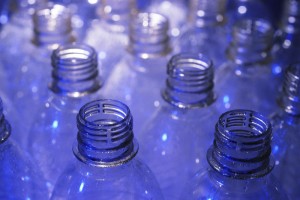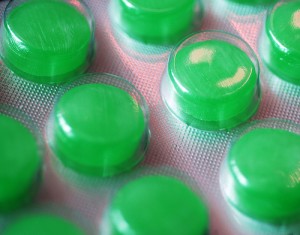Recycling plastic is a hot topic these days: after all, more than 80% of Americans have access to a plastics recycling program. Interest is especially high among plastic injection molders, who would be the first to suffer from onerous governmental regulations if a sledge hammer rather than a scalpel were brought to bear on plastic recycling regulation.
That’s why the plastics industry has developed the “resin identification coding system,” which allows consumers (and others) to identify what kind of plastic they are attempting to recycle. But what do those numbers actually mean, and why should they be important to you?
So, let’s translate the system into simple, non-technical terms. Once you have a grip on what materials make up your plastic, you can make a better decision on which to utilize, from purchase to disposal.
Plastic #1 – PET, PETE (Polyethylene Terephthalate)
Where You’ll Find It:
- Bottles for water, soft drinks, juice, sports drinks, mouthwash, ketchup, beer and salad dressings
- Food jars, such as peanut butter, jelly, jam and pickles
- Microwavable food trays
Why It’s So Common: Plastic #1 is a clear plastic that is ideal for beverages because of its moisture-barrier properties. This material has smooth surfaces and is made for high impact. So drop it, roll it or throw it – the resin will hold its shape and protect the substance inside.
The Bottom Line on Recycling PET: Plastic #1 is one of the most common and highly recycled resins. Most curbside programs will accept this plastic in bottle form. Plastic #1 is also the main resin targeted with container deposit laws, also called bottle bills. A container deposit law requires a minimum refundable deposit on beverage containers in order to ensure a high rate of recycling or reuse. Currently, 11 states have bottle bills in place, including New York, Connecticut and North Carolina.
Fun Facts:
1. Recycling a single plastic bottle can conserve enough energy to light a 60-watt light bulb for up to six hours.
2. Recycled plastic bottles can be made into products such as clothing, carpeting, detergent bottles and lumber for outdoor decking.
3. According to the EPA, while overall recovery of plastics for recycling is relatively small – 2.1 million – recovery of some plastic containers has reached higher levels. PET bottles were recovered at a rate of 27 percent in 2008, according to a recent report.
Plastic #2 – HDPE High Density Polyethylene
Where You’ll Find It:
- Shopping bags
- Milk jugs
- Bottles for shampoo, dish and laundry detergent, household cleaners
- Water and soda bottles
- Cereal box liners
- Shipping containers
Why It’s So Common: Plastic #2 is translucent and relatively stiff. These properties create a strong barrier, are suitable for high temperatures and the material is virtually crack-resistant. It is also well-suited for products that have a longer shelf-life. Its chemical resistance make it ideal for bleaches and detergents.
The Bottom Line on Recycling: Plastic bags are generally made from plastic #2. The material can hold up to 2,000 times its own weight, making it the perfect product for transport. However, because of their light weight, plastic bags are often hard to recycle and left out of curbside programs. But most major grocery store chains have in-store recycling bins for plastic bags.
There is a high demand for this material, and in most areas, demand exceeds the available supply, because many consumers are not aware that collection programs are available in stores. The trick is actually remembering to take those excess bags with you the next time you go shopping.
Fun Facts:
1. According to the EPA, only about 12 percent of bags and film were
2. Recycling or reusing 1 ton of plastic bags saves the energy equivalent of 11 barrels of oil.
3. Recycled plastic #2 content can be found in plastic lumber, buckets and crates, bottles for non-food items (shampoo, detergent, motor oil) and even curbside recycling bins themselves.
Plastic #3 – PVC, Vinyl
PVC is considered a difficult and expensive material to recycle. For this reason, much of it ends up in landfills. Photo: Flickr/incurable_hippie
Polyvinyl chloride
Where You’ll Find It:
- Blister packs
- Clamshell containers
- Bags for bedding, medical shrink wrap, deli and meat wrap
- Pipes, siding, window frames, fencing, decking and railing
Why It’s So Common: PVC is very strong and high-impact. Along with its brilliant clarity, plastic #3 is also resistant to grease, oil and chemicals.
The Bottom Line on Recycling: PVC is not commonly recycled or recyclable, nor is it biodegradable. More than 7 billion pounds of PVC are thrown away in the U.S. annually, and only 18 million pounds – barely one-quarter of 1 percent – is recycled. The relatively new mechanical recycling process known as Vinyloop® technology, developed by Solvay Research & Technology, allows the complete separation of PVC material from the non-PVC materials that are often combined with it.
Fun Facts:
1. PVC requires 20 percent less energy to produce than other plastics. It is also thought to save on fossil fuel use, as its principal raw material (nearly 60 percent) is chlorine-derived from common salt.
2. To make vinyl products flexible, controversial plasticizers known as phthalates are used, accounting for nearly 90 percent of total phthalate consumption. This translates into more than 5 million tons used for vinyl every year.
3. Energy-intensive chlorine production for PVC consumes an estimated 47 billion kilowatt hours per year – almost equal to the annual total output of eight medium-sized nuclear power plants.


